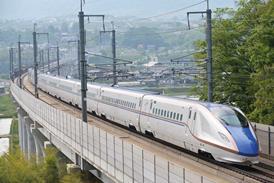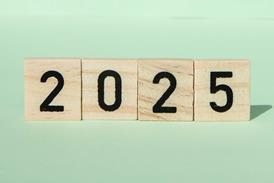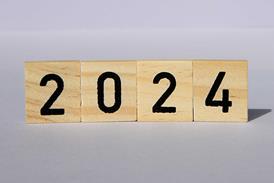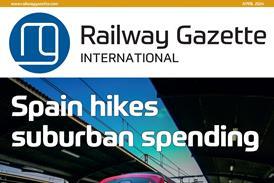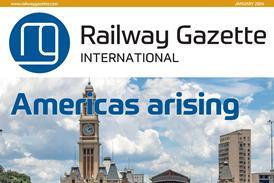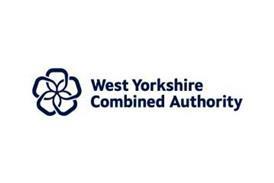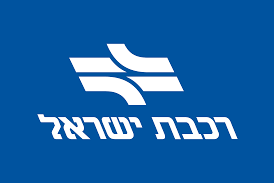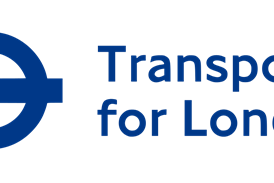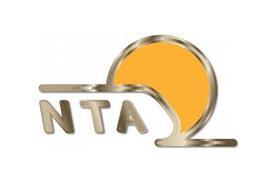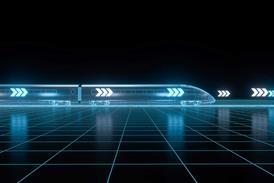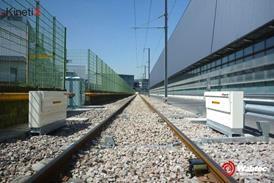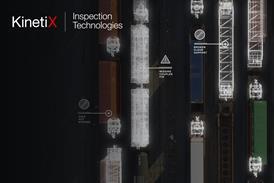
With the December 2008 timetable change, Trans Regio Deutsche Regionalbahn GmbH will take over the operation of local passenger services on the Mainz - Koblenz - Köln route, using a fleet of 16 Desiro Main Line EMUs leased from Angel Trains International. These units are being built by Siemens at Uerdingen, under a €70m contract awarded in March 2007 that includes options for up to 84 more trainsets.
The first of the three-car EMUs, which carries the EBA classification ET460, is currently undergoing commissioning at the Wegberg-Wildenrath test centre ahead of delivery.
Announced in June 2006, the Desiro Main Line is Siemens’ modular platform for regional multiple-units, primarily aimed at the contract operators that are now responsible for running an increasing proportion of regional passenger services across Germany. The basic concept was outlined in RG 8.06 p446, where it was suggested that Siemens needed to develop a new trainset as DB would not allow its suppliers to sell EMUs based on its existing S-Bahn stock to rival operators.
As with the Coradia Lirex Continental from Alstom (RG 5.08 p201), and the forthcoming Talent 2 from Bombardier, Desiro Main Line is envisaged as a fully flexible modular trainset that meets the latest TSI crashworthiness standards yet can easily be adapted to suit specific applications. It can also be modified at a later date to facilitate subsequent use on a different concession, avoiding the high engineering cost of developing a bespoke design and making the vehicles attractive to rolling stock leasing companies looking for a relatively standard product.
Unlike its competitors, Siemens decided to base its new design on individual vehicles, rather than using articulation bogies. This enabled Siemens to scoop the order to supply 305 EMUs for Belgian National Railways, as the Desiro Main Line concept best fulfilled SNCB’s requirements regarding the number of seats in a given unit length (RG 5.08 p289). In addition, Desiro Main Line can be configured to suit three typical platform heights: 550 mm, 760 mm or 900 mm, with two standard entrance heights at 600 mm or 800 mm above rail.
Aluminium bodies
The main speciality of Siemens’ Uerdingen plant is the welding of long extruded aluminium profiles to form car bodies such as those used on the ICE3 and Velaro families. Desiro Main Line follows this same basic model, with a steel-framed crashworthy nose bolted to the aluminium bodyshell. The centre part between the doors in each vehicle provides the low-floor area, with a floor height at 800 mm above rail to suit 760 mm high platforms. The outer ends behind the cabs have a floor height of 1 075 mm over the end bogies, but for the inner ends Siemens has managed to keep the gangway over the centre bogies at 895 mm, which is reached by ramps from the vestibule areas. However, the Kiel Match seats are mounted on 180 mm high boxes covering the wheels.
In one of the end vehicles, the low-floor section accommodates a multi-function area with folding seats, a wheelchair space and an accessible toilet. Electrically-operated sliding plug doors are fitted, with two 1 300 mm wide doorways on each side of each vehicle.
The three-car unit runs on bolsterless SF 6500 bogies, of which the four under the end vehicles are powered. Total weight of the powered bogie is 9 tonnes, and the unpowered ones weigh 6·7 tonnes.
In each bogie the axles are guided by longitudinal arms, which at one end support the bogie frame by coil springs with rubber elements, complemented by vertical shock absorbers. Traction forces are transmitted between car body and bogie frame by a central mechanism consisting of rubber/metal springs and bearing surfaces. The secondary air springs are equipped with a two-point levelling system, and a torsion stabiliser prevents the car from rolling.
The fluid-cooled three-phase motors are fully suspended from the bogie frame using rubber springs, and drive via a toothed coupling to the semi-suspended Flender gearbox, which is supported on one side from the frame and rests directly on the axle. By disconnecting the coupling, the wheelset can be removed while the motor remains in place.
All axles are equipped with electro-pneumatic disc brakes, and the outer wheelsets also have sanding equipment. Eight axles are equipped with spring-applied brakes which can be used for parking, and each unit is fitted with two 84 kN magnetic track brakes for emergencies.
All electrical equipment has been supplied by Siemens, and everything is roof-mounted with exception of the compressor and batteries. The units are fitted with the standard Sitrac traction control system, which is fully redundant apart from the pantograph mounted on one of the end vehicles. Each motor car has its own transformer and four-quadrant converter, feeding an IGBT inverter pack driving the four motors on that vehicle. Roof-mounted cables transfer the high voltage supply to the other motor vehicle. As with almost all modern 15 kV, 16·7 Hz trainsets, the units are equipped with regenerative braking, but there are no brake resistances. Each vehicle has its own roof mounted air-conditioning unit.
The interior of the finished train is light and roomy. Travelling at 110 km/h on the test ring, the ride quality was excellent. Interior noise levels were very low, even with the air-conditioning in operation.
| Principal suppliers | |
|---|---|
| Bodyshells, electrical equipment, assembly | Siemens |
| Exterior and interior design | Tricon |
| Doors | Bode |
| Air-conditioning | Faiveley |
| Automatic end couplers | Scharfenberg |
| Brakes | Knorr-Bremse |
| Pantograph | Fa Richard |
| Seats | Kiel |
| Technical data for Desiro Main Line Class ET 460 | |
|---|---|
| Axle arrangement | Bo’Bo’ 2’2’ Bo’Bo’ |
| Vehicle profile | EBO G1 UIC 505-1 |
| Crashworthiness | EN 15227 |
| Buffing load kN | 1500 |
| Fire prevention | Level 3 DIN 5510-2; NF F16-101 |
| Overall length over couplings m | 70·9 |
| Length of end car mm | 24200 |
| Length of centre car mm | 22500 |
| Width mm | 2840 |
| Height mm | 4250 |
| Empty weight tonnes | 133 |
| Maximum axleload tonnes | 17 |
| Maximum speed km/h | 160 |
| Service acceleration m/s² | 1·0 |
| Service braking rate m/s² | 1·0 |
| Emergency braking rate m/s² | 1·2 |
| Minimum radius (in depot) m | 110 |
| Steepest gradient | 4% |
| Exterior temperature range °C | - 35 to + 40 |
| Doorway width mm | 1300 |
| Door height mm | 2000 |
| Headroom in high-floor area mm | 2040 |
| Headroom in low-floor area mm | 2315 |
| Floor height above rail mm | 800 |
| over middle bogies mm | 895 |
| over end bogies mm | 1075 |
| Steps up to end sections mm | 2 x 140 |
| Height of under-seat boxes mm | 180 |
| Gangway width mm | 510 |
| Seat width mm | 450 |
| Spacing between facing seats mm | 1650 |
| Spacing between airline seats mm | 750 |
| Bogie wheelbase mm | 2300 |
| Wheel diameter new/used mm | 850/760 |
| Bogie centresm | 16·2 + 15·7 + 16·2 |
| Power supply | 15 kV 16·7 Hz |
| Traction motors | 8 x 1TB1724 |
| Maximum rating kW | 335 |
| Continuous rating | 210 kW @ 2000 rev/min |
| Gear ratio | 3.865972222 |
| Transformer rating mVA | 2 x 1142 |
| Peak inverter rating mVA | 2 x 1·6 |
| Auxiliary inverter kVA | su mmer 90 / winter 110 |
| Battery charger DC/110V | A 2 x 110 V 91 A |
| Sealed lead-acid batteries | 2 x 100 Ah (C5) |
| Ventilation per car m³/h | 2800 |
| Heating per car kW | 40 |
| Cooling per car kW | 28 |
| Cab ventilation rate m³/h | 600 |
| Cab heating kW | 6 |
| Cab cooling kW | 5 |
| Seats (first/second) | 252 |
| Standees (@ 4/m2) | 240 |
| Specific weight kg/m² | 662·5 |
| Specific weight kg per seat | 526 |
| Specific power kW/t | 19·6 |
| Door width per m of train length mm/m | 111 |


